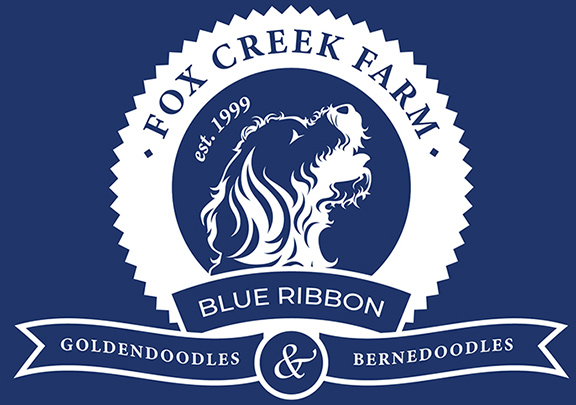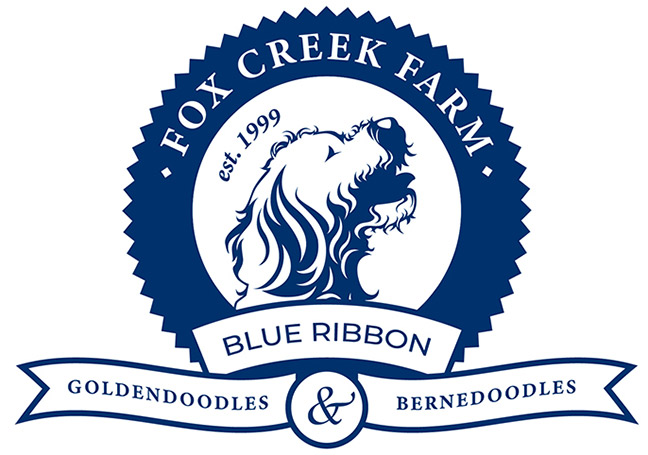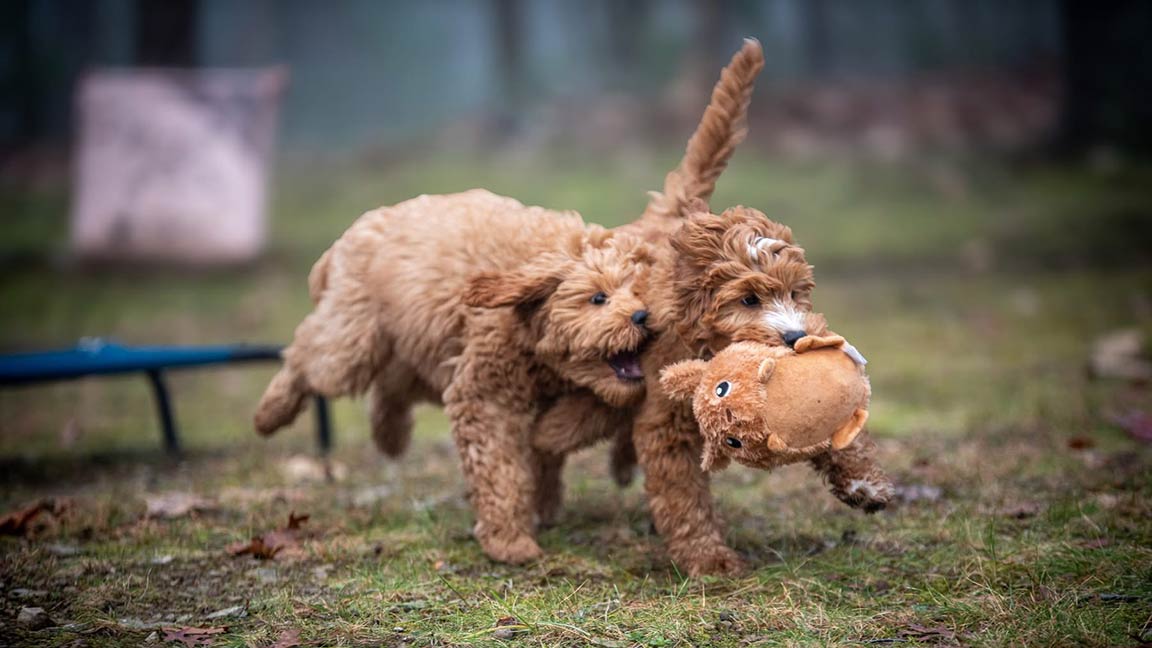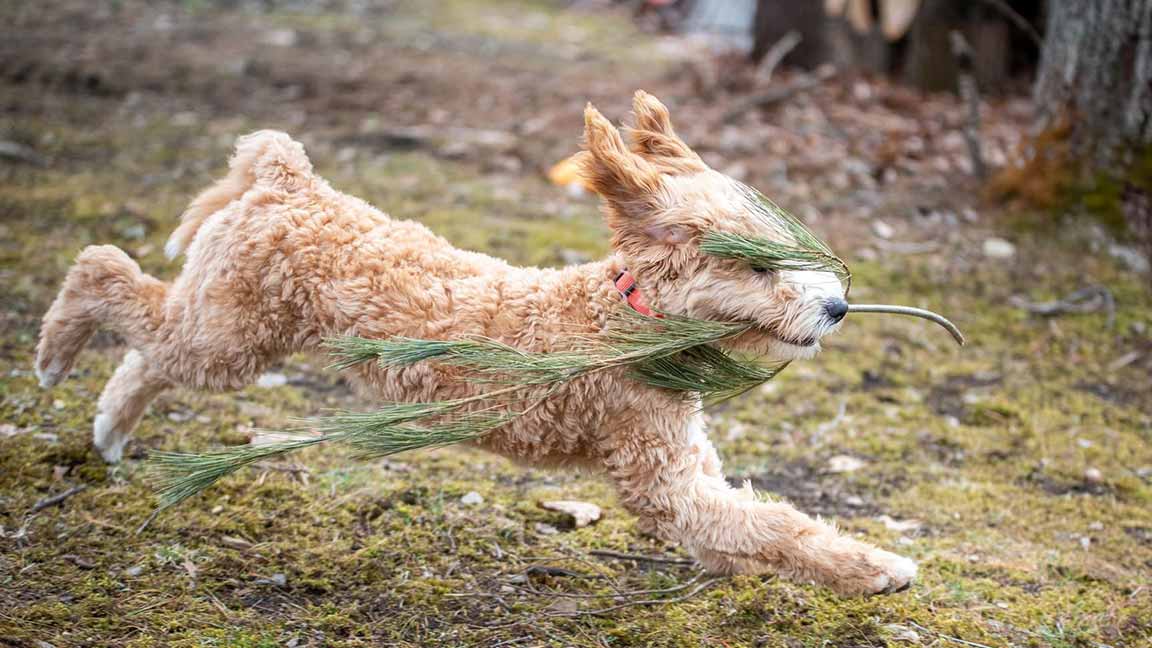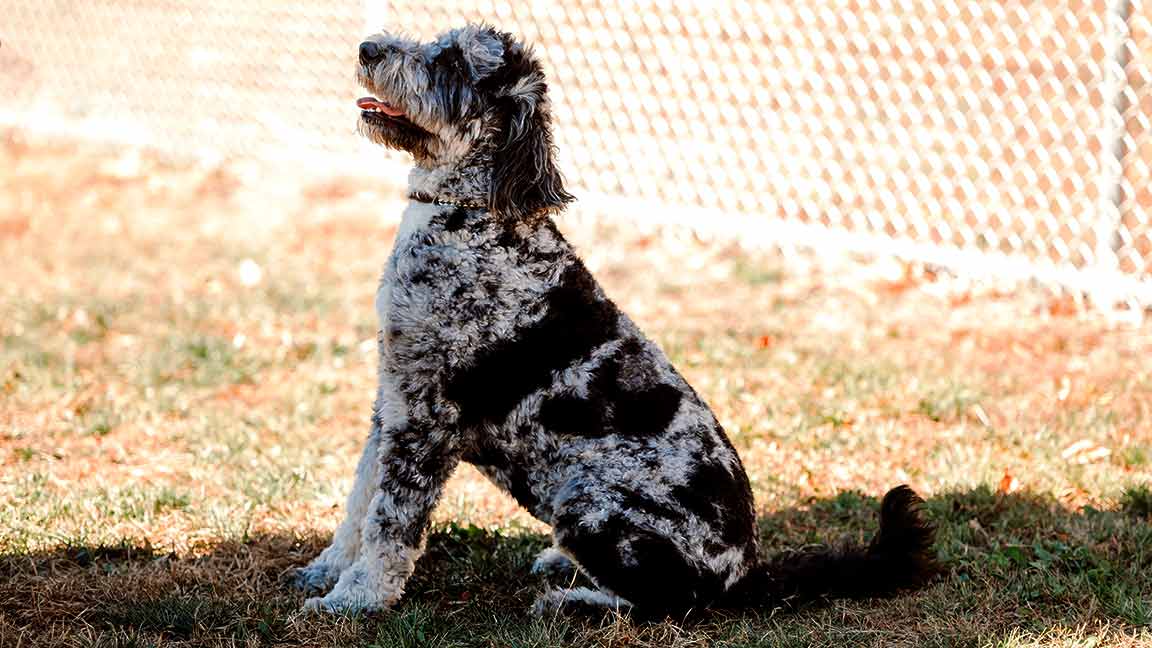
Merle Doodle Guide: Key Facts About This Unique Breed
Goldendoodles have quickly become one of the most popular designer dog breeds, and it’s easy to see why. These lovable dogs, a mix between a Golden Retriever and a Poodle, boast a wonderful combination of intelligence, friendliness, and low-shedding coats. But among the various coat colors and patterns, there’s one that often sparks curiosity and conversation: the merle doodle.
So, what exactly is a merle doodle? If you’ve seen a Goldendoodle with a striking, marbled coat pattern that looks almost like a painter’s masterpiece, you’ve likely encountered one. This unique coloration isn’t just eye-catching; it comes with its own set of questions and considerations.
Dog lovers are increasingly intrigued by merle doodles, wondering about their rarity, how they came to be, and what makes them stand out from other Goldendoodles. Are they just a passing trend, or is there more to the story?
In this article, we’ll dive deep into everything you need to know about merle doodles. From their origins and rarity to their care requirements and ethical considerations, we’ll cover all the bases. Whether you’re a potential owner or just curious, read on to discover the fascinating world of merle doodles.
What Is a Merle Doodle?
If you’re familiar with Goldendoodles, you know they come in a variety of colors and patterns, but merle doodles are something special. A merle doodle is a Goldendoodle that has a unique, marbled coat pattern known as “merle.” This pattern can include patches of different colors, often with lighter shades mixed in, giving the coat a beautiful, almost mosaic-like appearance.
Merle Color Pattern Explained
The merle pattern is not just a color but a specific genetic trait that creates a patchwork of colors in a dog’s coat. This pattern can appear in various shades, including blue, red,

and even chocolate merle. Here’s what sets the merle pattern apart:
- Patchwork Coat: The merle gene causes random patches of color to appear on the dog’s coat, often creating a speckled or dappled look.
- Variety of Shades: Merle patterns can include combinations of black, blue, gray, white, chocolate, and red, depending on the underlying coat color.
- Unique Markings: Each merle doodle is unique, with no two dogs having the same pattern. This makes them particularly appealing to those who want a one-of-a-kind pet.
Comparing the Merle Doodle with Other Goldendoodle Colors
Goldendoodles come in many colors, such as cream, apricot, red, black, and chocolate. While these colors are beautiful, the merle pattern adds an extra layer of visual interest. Here’s how merle doodles compare:
- Cream, Apricot, and Red Goldendoodles: These colors are typically solid and uniform, lacking the patchwork look of a merle.
- Black and Chocolate Goldendoodles: These darker colors can be striking but don’t have the multicolored pattern seen in merles.
- Merle Goldendoodles: The marbled, multi-toned coat makes them stand out in a crowd. Their unique appearance often makes them a favorite among Goldendoodle enthusiasts looking for something different.
How Rare Is a Merle Doodle?
Merle doodles are a rare gem in the Goldendoodle world. Their rarity can be attributed to several factors, primarily revolving around genetics and breeding practices.
First off, the merle gene itself is quite rare among Goldendoodles. This gene must be inherited from the Poodle ancestors, which are known to carry the merle trait. When breeding Goldendoodles, breeders must carefully select parents that can produce the merle pattern, and even then, not all puppies in a litter will exhibit the merle coloring. This selective breeding makes merle doodles less common than their solid-colored counterparts.
Additionally, the process of breeding for the merle pattern requires a deep understanding of genetics and a commitment to ethical breeding practices. The merle gene can be associated with certain health issues if not managed properly. Responsible breeders ensure that they avoid “double merle” pairings (where both parents carry the merle gene), which can lead to serious health problems in puppies. This careful and cautious approach to breeding further limits the number of merle doodles available.
In terms of market trends, merle doodles are highly sought after. Their unique and striking appearance makes them a favorite among dog enthusiasts. This demand, coupled with their rarity, often makes merle doodles more expensive than other Goldendoodle colors. Potential owners need to be prepared for a possible waiting list and a higher price tag.
It’s also worth noting that the popularity of merle doodles has grown significantly in recent years. As more people become aware of this unique color pattern, the demand continues to rise. However, reputable breeders will always prioritize the health and well-being of the dogs over producing large numbers of merle puppies.
 The Origin of the Merle Doodle
The Origin of the Merle Doodle
The story of merle doodles starts with the intriguing history of the merle gene itself. This gene has been around in various dog breeds for a long time, known for creating beautiful, marbled coat patterns. While the merle gene is common in breeds like Australian Shepherds, Collies, and Dachshunds, its introduction into the Goldendoodle lineage is a more recent development.
History of the Merle Gene in Dog Breeds
The merle gene causes a unique dilution of the coat color, leading to the patchwork of lighter and darker areas that are so distinctive. This gene can also affect the dog’s eyes and skin, sometimes resulting in blue or oddly colored eyes and mottled skin. Historically, the merle pattern has been valued for its beauty and uniqueness.
Introduction of the Merle Gene into Goldendoodles
To produce merle doodles, breeders start with a merle Poodle bred to a Goldendoodle to incorporate the merle gene into the Goldendoodle line. Because merle Poodles are not allowed to compete in the show ring per the AKC, they are a rare color in the Poodle breed. The merle gene is a dominant gene meaning only one parent needs to carry this color gene for it to be expressed in some of the offspring. When a puppy inherits the merle gene, but it is not expressed, that puppy carries the “hidden merle” gene.
Breeding Practices and Ethical Considerations
Breeding merle doodles responsibly is crucial. The merle gene, while beautiful, can also carry health risks if not managed correctly. For instance, breeding two merle-patterned dogs together can result in “double merle” puppies, which have a higher risk of being deaf, blind, or having other serious health issues.
Responsible breeders avoid these risks by ensuring that only one parent carries the merle gene. When breeding a visually apparent merle parent, DNA testing has to be done on the other partner to ensure it does not carry the hidden merle gene. They also perform genetic testing to confirm that the breeding pairs are healthy and compatible. This level of care and attention to detail is essential to maintain the well-being of the dogs and the integrity of the breed.
- Genetic Testing: Ensures health and compatibility of breeding pairs.
- Avoiding Double Merles: Prevents serious health issues in puppies.
- Ethical Breeding Practices: Prioritizes the well-being of the dogs over profit.
Common Questions About the Merle Doodle
Is the Merle Doodle Breed Healthier or Have More Health Issues?
One of the most common concerns about merle doodles is their health. The merle gene can be associated with certain health risks when both parents carry the gene. These risks include:
- Hearing Problems: Merle doodles may have a higher risk of partial or complete deafness.
- Vision Issues: Some merle doodles can be prone to vision problems, including blindness.
- Skin Sensitivity: Merle-patterned dogs can have more sensitive skin, particularly in the lighter patches.
However, these issues are primarily a concern in “double merles.” Responsible breeders who ensure only one parent carries the merle gene significantly eliminate these risks.
Do Merle Doodles Have a Different Temperament?
The merle pattern doesn’t affect a Goldendoodle’s temperament. Merle doodles share the same friendly, intelligent, and affectionate traits as other Goldendoodles. They are typically:
- Friendly and Social: They love being around people and other pets.
- Intelligent: Easy to train and eager to please.
- Affectionate: Known for their loving nature and strong bond with their families.
Their temperament is more influenced by their upbringing, socialization, and the individual traits of their parents rather than their coat pattern.
How Do You Care for a Merle Doodle’s Coat?
Caring for a merle doodle’s coat involves regular grooming to maintain its beautiful appearance and health. Here are some tips:
- Regular Brushing: To prevent mats and tangles, brush your merle doodle’s coat several times a week.
- Bathing: Bathe your doodle every few weeks or as needed, using dog-friendly shampoo to keep their coat clean and shiny.
- Trimming: Regular trims can help manage the coat length and keep it looking neat.
Summarized Tips for Coat Care:
- Brush regularly to prevent tangles.
- Bathe as needed to maintain cleanliness.
- Trim to manage coat length.
What Is the Rarest Goldendoodle Color?
Goldendoodles come in a variety of stunning colors, each with its own appeal. However, when it comes to rarity, some colors stand out more than others.
Overview of Different Goldendoodle Colors
Goldendoodles can be found in a wide range of colors, including:
- Cream: A light, soft shade that gives the Goldendoodle a classic, elegant look.
- Apricot: A warm, golden color that’s quite popular among Goldendoodle enthusiasts.
- Red: A rich, vibrant hue that makes these dogs stand out.
- Black: Sleek and striking, black Goldendoodles are less common but very eye-catching.
- Chocolate: A deep, luscious brown that’s both unique and attractive.
- Parti: A two-tone pattern where at least 50% of the coat is white, combined with another color.
Factors That Determine Rarity
Several factors contribute to the rarity of certain Goldendoodle colors:
- Genetic Availability: Some colors are less common in the genetic pool, making them harder to breed consistently.
- Breeding Practices: Responsible breeders focus on health and temperament, sometimes limiting the availability of certain rare colors.
- Market Demand: Higher demand for specific colors can influence their rarity. Some colors become rare because breeders can’t keep up with the demand without compromising quality.

Where Does the Merle Doodle Stand Among These Colors
Merle doodles are among the rarer Goldendoodle colors due to the specific genetic requirements needed to produce the merle pattern. The unique marbled look of merle Goldendoodles sets them apart, making them highly sought after. However, compared to other rare colors like chocolate or black, merle Goldendoodles require even more careful breeding to ensure the health and well-being of the puppies.
The Rarest Color
While merle is certainly rare, the absolute rarest color for Goldendoodles is often considered to be the “phantom” pattern. This pattern combines two distinct colors in a specific arrangement, usually involving a primary color with secondary markings on the eyebrows, muzzle, chest, and legs. Achieving this pattern requires precise genetic combinations, making it extremely rare and highly prized.
Summary of Key Points:
- Cream, Apricot, and Red: Common but beloved colors.
- Black and Chocolate: Less common, striking in appearance.
- Parti and Phantom: Unusual patterns, with phantom being exceptionally rare.
- Merle: Unique marbled pattern, rare due to specific genetic requirements.
Caring for a Merle Doodle
Caring for a merle doodle involves more than just regular dog maintenance; their unique coat requires some specific attention. Here’s what you need to know to keep your merle doodle happy and healthy.
Coat Care and Grooming
Merle doodles have a stunning coat that needs regular upkeep to stay in top condition. Brushing is crucial to prevent mats and tangles, especially because their coats can range from straight to wavy to curly. Aim to brush your merle doodle several times a week using a slicker brush or a comb designed for dogs with dense coats.
Bathing should be done every few weeks or as needed, depending on how dirty your doodle gets. Use a gentle, dog-specific shampoo to avoid skin irritation, which can be more prevalent in lighter patches of a merle coat. Regular trims are also essential to manage coat length and keep your dog comfortable and neat.
Health Checks
Regular health checks are vital for all dogs and merle doodles are no different. Regularly schedule veterinary visits to monitor their hearing and vision, as merle patterns can sometimes link to deafness or eye problems if purchasing from a breeder that does not do DNA testing on color genes in the parent dogs.
Exercise and Mental Stimulation
Like all Goldendoodles, merle doodles are energetic and intelligent. They need daily exercise to stay healthy and happy. Regular walks, playtime in the yard, and interactive toys can help burn off energy and keep your doodle mentally stimulated. Activities like agility training, fetch, and puzzle toys are great ways to engage their minds and bodies.
Diet and Nutrition
A balanced diet is crucial for maintaining your merle doodle’s overall health and the quality of their coat. Consult your vet or breeder to choose a high-quality dog food that meets your doodle’s nutritional needs. Ensure they have access to fresh water at all times and monitor their weight to prevent obesity, which can lead to other health problems.
Tips for a Healthy Merle Doodle:
- Brush regularly to prevent tangles and mats.
- Bathe as needed using gentle, dog-specific shampoo.
- Schedule regular health checks.
- Provide daily exercise and mental stimulation.
- Maintain a balanced diet with high-quality dog food.
Pros and Cons of Owning a Merle Doodle
Merle doodles are undeniably beautiful and unique, but like any pet, they come with their own set of advantages and challenges. These insights can help you decide if a merle Doodle fits your home and lifestyle.
Ethical Considerations in Breeding a Merle Doodle
Breeding merle doodles responsibly requires careful attention to ethical practices. The allure of their unique coat pattern can sometimes lead breeders to prioritize appearance over health, but this approach can result in serious issues. Places like Fox Creek Farms Goldendoodles and Bernedoodles have been known to use ethical methods and are reputable breeders that can be trusted in the process of finding a new furry friend.
Importance of Responsible Breeding Practices
Responsible breeders prioritize the health and well-being of their dogs above all else. This includes genetic testing to ensure that breeding pairs do not carry genes that could result in health problems for the puppies. For merle doodles, it’s crucial to avoid breeding two merle-patterned dogs together, as this can lead to “double merles,” which are at a higher risk for severe health issues such as deafness and blindness. A dog can carry a hidden merle gene, so with any breeding that involves a visually apparent merle parent, DNA testing is necessary for the partner to ensure they do not carry this hidden merle gene.
Ethical Issues Around Breeding Merle Dogs
The merle gene can introduce a variety of health concerns, which makes ethical breeding practices even more critical. Breeders must be well-educated about the genetics involved and committed to producing healthy dogs. This means selecting breeding pairs carefully, conducting regular health screenings, and providing a high standard of care for all dogs involved in the breeding process.
Choosing a Reputable Breeder
When looking for a merle doodle, it’s essential to choose a breeder who adheres to ethical practices. Look for breeders who:
- Conduct genetic testing and health screenings.
- Provide detailed health records for their dogs.
- Avoid high-risk breeding practices, such as breeding two merles together.
- Offer transparency about their breeding practices and are willing to answer any questions you have.
FAQs About the Merle Doodle
1. What is a Merle Doodle?
A merle doodle is a Goldendoodle with a unique marbled coat pattern created by the merle gene. This gene causes a beautiful mix of lighter and darker patches in the coat, resulting in a striking appearance that stands out among other Goldendoodle colors.
2. Are Merle Doodles More Prone to Health Issues?
Merle doodles can be prone to specific health issues, particularly if they inherit two copies of the merle gene (known as “double merles”). Health concerns include hearing and vision problems, such as congenital deafness and merle ocular dysgenesis, which can result in blindness. Responsible breeders mitigate these risks by ensuring that only one parent carries the merle gene.
3. What is the Temperament of a Merle Doodle?
Merle doodles share the same friendly, intelligent, and playful temperament as other Goldendoodles. They are known for their social nature, which makes them great family pets. They respond well to training and enjoy activities that keep them mentally and physically stimulated.
4. How Rare is a Merle Doodle?
Merle doodles are relatively rare due to the specific genetic requirements needed to produce the merle pattern. The breeding process involves pairing a merle-carrying dog with a non-merle to avoid health complications, which can limit the number of merle doodles available.
5. What are the Grooming Needs of a Merle Doodle?
Merle doodles require regular grooming to maintain their coat. This includes brushing several times a week to prevent matting, bathing as needed with gentle shampoo, and regular trims to manage coat length. Additionally, their ears and teeth should be checked and cleaned regularly to avoid infections and dental issues.
6. How Long Do Merle Doodles Live?
The average lifespan of a merle doodle is between 10 to 15 years. Lifespan can vary based on genetics, diet, size, exercise, and overall health. Regular veterinary check-ups and a balanced diet can help ensure a long, healthy life for your merle doodle.
7. How Do You Train a Merle Doodle?
Training a merle doodle is generally straightforward due to their intelligence and eagerness to please. Positive reinforcement techniques work best. Consistent training, socialization, and regular exercise are key to a well-behaved and happy merle doodle.
8. What is the Cost of a Merle Doodle?
Merle doodles are often more expensive than other Goldendoodle colors due to their rarity and the careful breeding practices required. Prices can range from $3,000 to $5,000, depending on the breeder and specific characteristics of the dog.
9. Are Merle Doodles Recognized by Kennel Clubs?
Goldendoodles, including merle doodles, are not recognized as a pure breed by major kennel clubs like the American Kennel Club (AKC). However, they can participate in the AKC’s Canine Partners Program, which allows mixed breeds to compete in various activities and earn titles.
10. What Activities Do Merle Doodles Enjoy?
Merle doodles enjoy a variety of activities that keep them active and engaged. They thrive on regular walks, playtime, and interactive games. Many merle doodles also excel in agility training, swimming, and hiking, making them great companions for active families.
